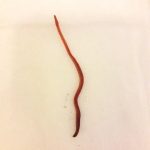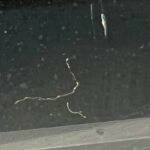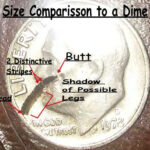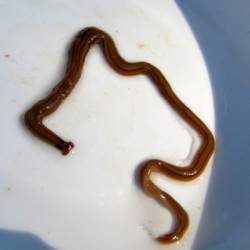The title of this article may appear to only invite a tautology (a worm is a worm) or a mere example (an earthworm is a worm). But tautologies and examples make a good definition not, just as bizarrely worded sentences make not eloquent constructions. So, what is a worm? The matter is not exactly simple, and the answer to this deceptively easy question will prove very surprising to some, as a worm is not anything at all, yet it is. Allow us to explain.
As we have noted on numerous occasions, including in a recent article about the life cycles of larval animals where the issue was discussed in minor depth, the word “worm” is scientifically meaningless. We emphasize “scientifically” because the word “worm” obviously isn’t meaningless in general. Broadly speaking, people know what it means, albeit in a confused way. However, as far as the proper classification of life is concerned, there are no worms because “worms” is an obsolete taxon. Back in the 17th and 18th century, giants of taxonomy like Carolus Linnaeus and Jean-Baptiste Lamarck used “worm” to refer to any invertebrate animal that is not an arthropod. This is now a hopelessly vague category of life. There is still much work to be done in the world of taxonomy, and classifications are always in flux, but we certainly have a more detailed understanding of the world than scientists like Linnaeus and Lamarck had.
Although “worm” is no longer used in the scientific community to refer in any precise way to biological organisms, the word is still widely employed in everyday life. The word can refer to a scandalously diverse set of organisms, as basically anything that has a tube-like, cylindrical body is called a “worm.” (Obviously, there are exceptions; snakes, for instance, generally aren’t called worms, but they may as well be.) After answering so many reader questions, we’ve noticed that people have a particular penchant for calling various types of larvae (especially beetle, fly, butterfly, and moth larvae) “worms,” but plenty of other creatures fall under this heading, like millipedes. Insofar as nothing is technically a worm, none of this is wrong per se. When a word means nothing, it means everything.
So, we can say that “worm” is simply not a proper term to use at all, or we can say it can refer to any cylindrical creature whatsoever (more or less). However, there is some middle ground between these two positions, one that appreciates that the term is imprecise, but nevertheless acknowledges that there are a great number of creatures that can intelligibly be referred to as “worms.” This is, not surprisingly, the usage approach that we take. On this approach, what counts as a worm?
Given all that has been said so far, it would be foolish to be overly rigid, but certainly creatures like annelids should be called worms. What else can one possibly call (outside a biology department) the various species of earthworms (which are annelids) if not “worms”? We also think that platyhelminthes, nematodes, and polychaetes should all be called worms, as they are all commonly called flatworms, roundworms, and bristle worms, respectively. (This last group is redundant, since polychaetes are annelids, but the former are generally known as “bristle worms” and not “ringed worms,” which is what annelids are called, so we figured it is best to keep them separate.) It probably also makes sense to keep members of the phylum Nemertea and the phylum Chaetognatha in the worm fold, as their common names are “bootlace worms” and “arrow worms,” respectively.
Basically, there are a number of things that the English language has locked in as “worms,” so there is no reason to dismantle this generally convenient term. Annelids, for instance, are just known as “worms,” and everyone thinks of them as worms. At the same time, it doesn’t strike us as terribly sensible to simply refer to any tube-like animal as a worm, especially when they are clearly another type of well-defined creature with a common name, like the various types of larvae we are constantly writing about.
As we said at the beginning, it is a difficult task to figure out exactly what a worm is. Scientifically, they aren’t anything, but in everyday speech they clearly are something, and in this article we have tried to spell out what that something is. We think it needlessly confuses the matter to refer to any cylindrical animals (like larvae) as “worms,” but there are still a great deal of creatures to which the term can meaningfully be applied.
All About Worms is always free, always reader-supported. Your tips via CashApp, Venmo, or Paypal are appreciated! Receipts will come from ISIPP Publishing.















